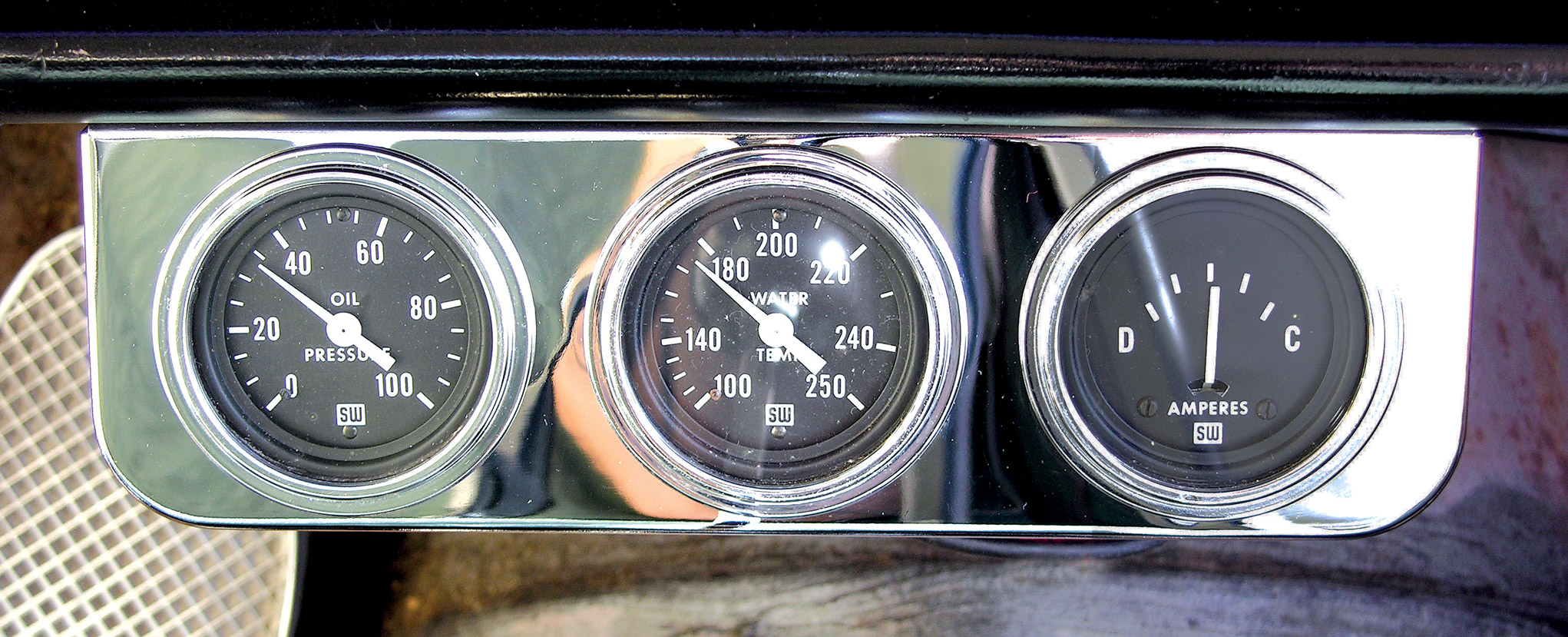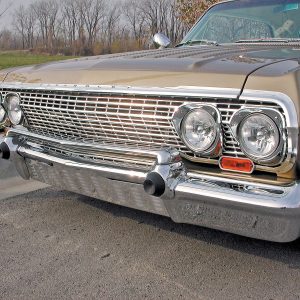


THE AUTO BUILDER
Featured
- All Post
- 20 High Priority - SR Super Rod
- Builds
- 25 High Priority - FB Ford Builder
- Cars
- 30 High Priority - AR American Rodder
- 01 Post Status
- 35 High Priority - RD Rodders Digest
- 40 High Priority - OTR On the Road
- 45 High Priority - SRB Street Rod Builder
- 50 High Priority - TB Truck Builder
- 55 High Priority - BSCENE Buckaroo Scene
- 60 High Priority - FPB Family Power Boat
- Trucks
- Swaps
- Performance Boats
- _000 Home Sliders
- Builders
- 00 Sidebars
- Manufacturers
- 05 High Priority - HCI Hot Compact Imports
- 05 Publications
- 10 High Priority - CR Chevy Rumble
- Back
- Chassis
- Engine
- Fuel System
- Electrical
- Exhaust
- Transmission / Drivetrain
- Suspension
- Steering
- Brakes
- Wheels and Tires
- Interior
- Exterior
- Accessories
- Power Adders
- Back
- Chassis
- Engine
- Fuel System
- Electrical
- Exhaust
- Transmission / Drivetrain
- Suspension
- Steering
- Brakes
- Wheels and Tires
- Interior
- Exterior
- Accessories
- Power Adders
- Back
- Chassis
- Engine
- Electrical
- Exhaust
- Fuel System
- Transmission / Drivetrain
- Suspension
- Steering
- Brakes
- Wheels and Tires
- Interior
- Exterior
- Accessories
- Power Adders
- Back
- Chassis
- Engine
- Electrical
- Exhaust
- Fuel System
- Transmission / Drivetrain
- Suspension
- Steering
- Brakes
- Wheels and Tires
- Interior
- Exterior
- Accessories
- Power Adders
- Back
- Chassis
- Engine
- Fuel System
- Electrical
- Exhaust
- Transmission / Drivetrain
- Suspension
- Steering
- Brakes
- Wheels and Tires
- Interior
- Exterior
- Accessories
- Power Adders
- Back
- Chassis
- Engine
- Fuel System
- Electrical
- Exhaust
- Transmission / Drivetrain
- Suspension
- Steering
- Brakes
- Wheels and Tires
- Interior
- Exterior
- Accessories
- Power Adders
- Back
- Chassis
- Engine
- Fuel System
- Electrical
- Exhaust
- Transmission / Drivetrain
- Suspension
- Steering
- Brakes
- Wheels and Tires
- Interior
- Exterior
- Accessories
- Power Adders
- Back
- Engine
- Fuel System
- Electrical
- Outdrives
- Steering
- Interior
- Accessories
- Power Adders
- Exterior and Hull
- Back
- Chassis
- Engine
- Electrical
- Exhaust
- Fuel System
- Transmission / Drivetrain
- Suspension
- Steering
- Brakes
- Wheels and Tires
- Interior
- Exterior
- Accessories
- Power Adders
- Back
- Chevrolet
- Cadillac
- Pontiac
- AMC
- Buick
- Jeep
- Lincoln
- Ford
- Honda
- GMC
- BMW
- Mitsubishi
- Dodge
- Nissan
- Chrysler
- Subaru
- Toyota
- Plymouth
- Mercury
- Volvo
- Volkswagen
- Oldsmobile
- Acura
- Back
- 05 Pub HCI Hot Compact Imports
- 15 Pub 4x4 4x4 Builder
- 20 Pub SR Super Rod
- 25 Pub FB Ford Builder
- 30 Pub AR American Rodder
- 35 Pub RD Rodders Digest
- 40 Pub OTR On the Road
- 55 Pub BSCENE Buckaroo Scene
- 10 Pub CR Chevy Rumble
- 50 Pub TB Truck Builder
- 60 Pub FPB Family Power Boat
- 45 Pub SRB Street Rod Builder
- Back
- Chip Foose
- Ring Brothers
- Jack Fuller
- Bob Cullipher
- Jerry Nichols
- Bobby Alloway
- Jesse James
- Carl Casper
- J.F. Launier
- Steve Sellers
- Boyd Coddington
- Rad Rides by Troy
- Cal Auto Creations
- George Barris
- West Coast Customs
- Back
- Street Rods
- Hot Rods
- Late Model
- Drag Race
- Handling
- Compact Cars
- Chassis
- Engine
- Fuel System
- Electrical
- Exhaust
- Transmission / Drivetrain
- Suspension
- Steering
- Brakes
- Wheels and Tires
- Interior
- Exterior
- Accessories
- Power Adders
- Chassis
- Engine
- Fuel System
- Electrical
- Exhaust
- Transmission / Drivetrain
- Suspension
- Steering
- Brakes
- Wheels and Tires
- Interior
- Exterior
- Accessories
- Power Adders
- Chassis
- Engine
- Electrical
- Exhaust
- Fuel System
- Transmission / Drivetrain
- Suspension
- Steering
- Brakes
- Wheels and Tires
- Interior
- Exterior
- Accessories
- Power Adders
- Chassis
- Engine
- Electrical
- Exhaust
- Fuel System
- Transmission / Drivetrain
- Suspension
- Steering
- Brakes
- Wheels and Tires
- Interior
- Exterior
- Accessories
- Power Adders
- Chassis
- Engine
- Electrical
- Exhaust
- Fuel System
- Transmission / Drivetrain
- Suspension
- Steering
- Brakes
- Wheels and Tires
- Interior
- Exterior
- Accessories
- Power Adders
- Chassis
- Engine
- Fuel System
- Electrical
- Exhaust
- Transmission / Drivetrain
- Suspension
- Steering
- Brakes
- Wheels and Tires
- Interior
- Exterior
- Accessories
- Power Adders
- Back
- 05 Post Imported
- 20 Post Missing Images (All)
- 25 Post Missing Images (Partial)
- 15 Post In Progress
- 30 Post Internal Review
- 40 Post On Hold
- 50 Post Approved
- 10 Post Images Imported
- 17 Post Missing TXT Files
- 18 Post Missing PDF Files
- 27 Post Missing Content
- Back
- Chassis
- Engine Swaps
- Interior Swaps
- Driveline
- Back
- Street Trucks
- OffRoad Trucks
- Chassis
- Engine
- Fuel System
- Electrical
- Exhaust
- Transmission / Drivetrain
- Suspension
- Steering
- Brakes
- Wheels and Tires
- Interior
- Exterior
- Accessories
- Power Adders
- Chassis
- Engine
- Fuel System
- Electrical
- Exhaust
- Transmission / Drivetrain
- Suspension
- Steering
- Brakes
- Wheels and Tires
- Interior
- Exterior
- Accessories
- Power Adders
- Back
- 01 Sidebar Left
- 01 Sidebar Right
Spotlighter
POPULAR READS
Instrumental Insurance
Using Gauges to Protect Your Investment
Author

Tim Gavern
Story & Photography
Years ago, the automakers, for whatever reason, decided that lights were better alternatives to gauges, thinking that warning lights would be more noticeable. The only problem is, “idiot” lights have a nasty habit of turning on only after the damage has already been done. Whether the automakers were being cheap, or simply saving their service managers from the rash of unnecessary questions from customers determined to find problems with their vehicles by watching the fluctuation of their gauges, is anyone’s guess. It’s probably a little of both, but nevertheless a direct-reading gauge is far more worthwhile than a flashing red light for most engine conditions.
By having gauges to monitor, patterns develop before your eyes that help you to instantly determine whether all is well or if a problem is beginning to arise. Here, we’re going to install an oil pressure gauge, water temperature gauge and an ammeter that indicates charging system operation. These three items are the most commonly installed gauges, but there are many other gauges available, including oil temperature, vacuum, fuel pressure, boost, exhaust gas temperature, transmission temperature and more.
First and foremost, we’ll begin with the oil pressure gauge. Oil pressure is the most important gauge, and is commonly installed closest to the driver. Oil to an engine is as important as our life’s blood. Oil not only lubricates, it also cools. As the oil pump sends oil throughout the engine, it pulls heat away from the rapidly moving internal components. By watching the oil pressure gauge, the engine’s oil pressure patterns can be determined. Any deviation from the norm can alert the driver to shut down the engine prior to any further damage.
For example, if your engine has a minimum of 20 pounds of oil pressure at idle, and say 50 pounds while driving, the gauge should never fall below 20 pounds. If it does, the engine should be turned off immediately and the reason for the fluctuation determined. Many good engines have been saved this way. Like when a friend was driving down the freeway, and he heard lifter clatter sounding louder than normal. He immediately glanced at his oil pressure gauge and saw the needle was at zero. He quickly turned off the engine and coasted to the side of the road. It turns out that a steel bristle from a brush used to clean the engine during its rebuild got lodged between the oil pump gears. The bristle got stuck, shearing off the drive pin. He saved the engine from a total loss. Of course, he had to take the engine apart, but at least there was no damage, so all but the oil pump was reusable.
The same is true for water temperature. By watching the temperature gauge, you can determine your engine’s normal operating range. When the temperature goes higher than normal, you have a little time to figure out why before any damage can happen. For instance, you’re out cruising and you get into some heavy traffic that slows to a crawl. By watching your gauge, you can determine when to either turn off to a less busy street to get some air into your radiator and lower the operating temperature, or whether you should pull over and let the car cool down. Without a gauge, you could overheat your engine, blow a head gasket and crack a head before an “idiot” light even indicates that you have a problem. Also, if your car runs hotter than you would like, or the engine detonates within a higher temperature range than your car normally runs, you can install a lower temperature thermostat and actually see the results on your engine temp gauge.
Finally, a gauge to determine whether your charging system is working correctly is also vital. By monitoring an ammeter (we prefer voltmeters), you can see patterns of how your charging system works. An ammeter will move to the charge side of the gauge for a short time after the starter has drained a little bit of power from the battery. The system will charge the battery back up to its normal level, and the gauge will then go back to the middle. If the needle stays on the charge side for longer than the normal pattern observed, the battery may be getting weak and should be checked. Again, this beats getting stranded with a dead battery in the middle of nowhere. A voltmeter will continually tell you how many volts your system is generating, and if your charging system is below operating capacity, you will know immediately.
The importance of gauges cannot be underestimated. Another important instrument is the fuel pressure gauge. Many high-performance engines have been seriously damaged due to detonation brought on by low fuel pressure, resulting in a lean mixture from insufficient fuel delivery, or flooded by excessively high pressure that is getting beyond the needle and seat.
When you can determine that all is well within your car’s operating systems at a single glance, the peace of mind is invaluable. It’s easier than you think to install a set of gauges, and it can be done with some simple tools and a few trips to hardware and auto parts stores. Check out this quick install.
ARTICLE SOURCES

Stewart-Warner
N19 W24200 Riverwood Drive, Suite 300
Waukesha,Wisconsin 53188
+1 800-676-1837














